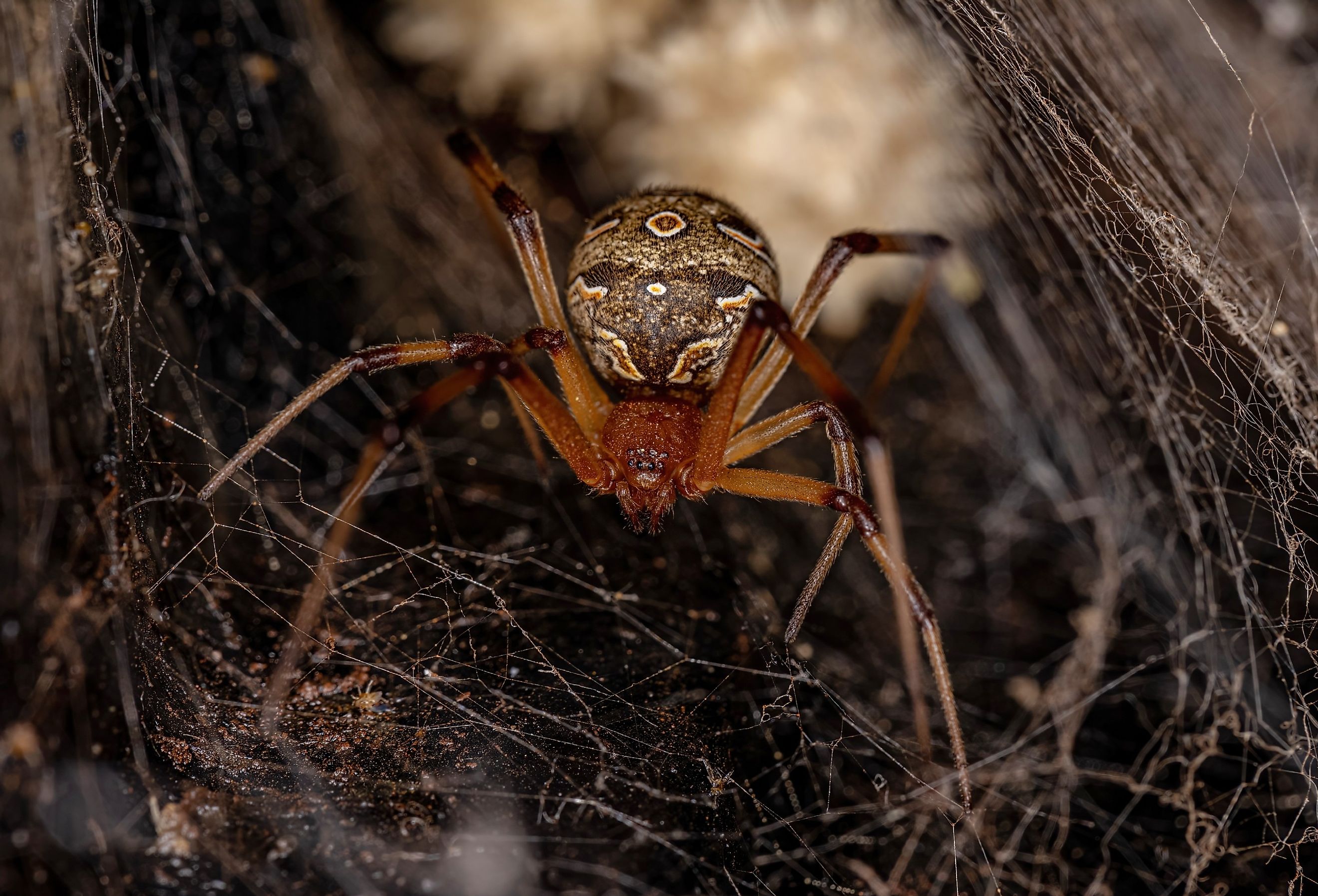
5 Most Venomous Spiders in Hawaii
Hawaii is one of the most alluring island destinations known to the tourism industry. Travelers love to visit the Aloha State to enjoy all there is regarding tropical climates, archipelago scenery, and lush paradise. With lots of foot traffic around, wildlife is also quite present and abundant. Of the wildlife in Hawaii, creatures like spiders can be a reason many people are fearful of considering a long-term itinerary. While spiders rarely bite humans, these venomous arachnids are not to be messed with!
Mediterranean Recluse
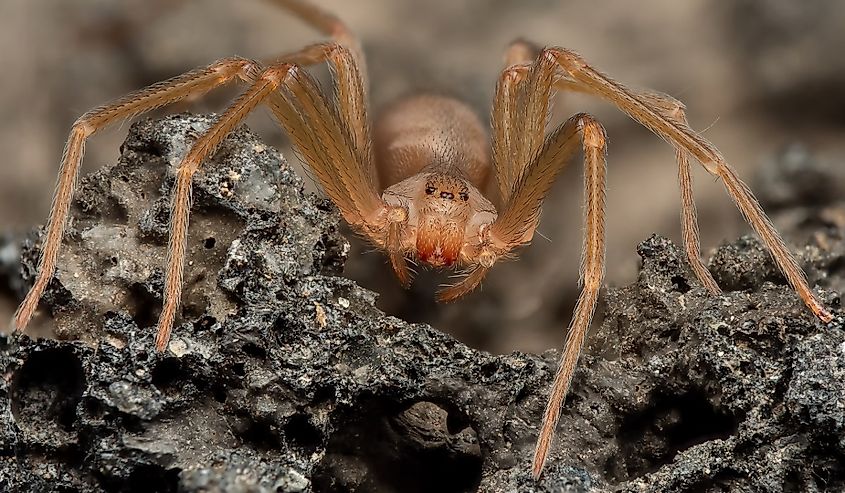
The Mediterranean recluse, scientifically known as Loxosceles rufescens, is originally native to the Mediterranean region as its name implies, but is known to inhabit four islands in the Hawaiian archipelago. They love to linger around damp areas, such as basements and caves, hunting for cockroaches and silverfish. This type of spider is risky to be near because it can hide in dark and secluded areas where people cannot typically notice it at first glance. Closets, basements, and other storage areas with lots of dust are likely places for tourists to discover a recluse.
Physically, these recluses are approximately the size of a quarter (7 to 7.5mm) with violin-shaped abdomens colored light tan or dark brown, and they have distinctively long legs. With that in mind, species of this kind can still inject venom and cause open sores, swelling, necrosis, and symptoms of nausea for their prey, similar to normal brown recluses. While not life-threatening, seeking medical attention if bitten by one is important. These spiders may bite anyone who gets too close or those who try to invade their privacy!
Western Black Widow
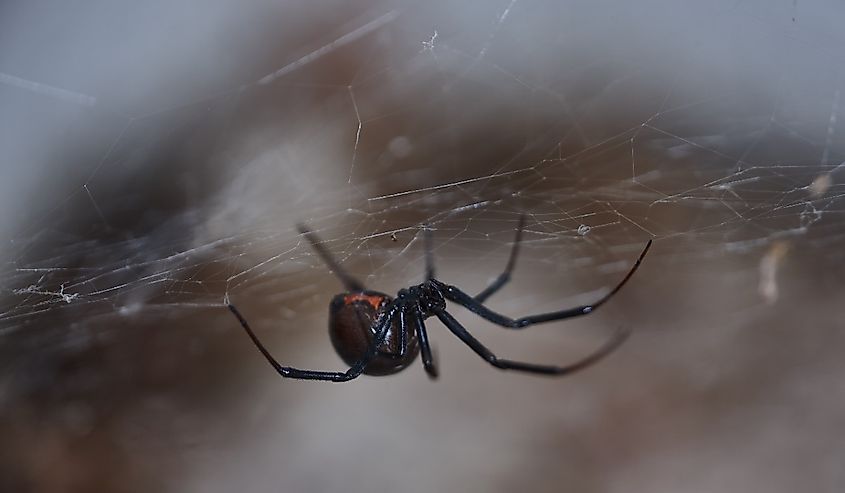
The name alone usually frightens people, as the black widow species is generally considered a scary arachnid. Formally, Latrodectus hesperus range from 7 to 15 mm long (with the males known to be one-half to a third of the size of their female counterparts) and can be found in hotter climates around Oahu. They remain a persistent threat to outsiders and locals. The female's red markings on their abdomen are a big reason to stay away from them, as their bite is more dangerous than the males. They are differentiated from Southern black widows, which have more complete hourglass markings. Western black widows, on the other hand, may have two triangles or barely visible red blotches.
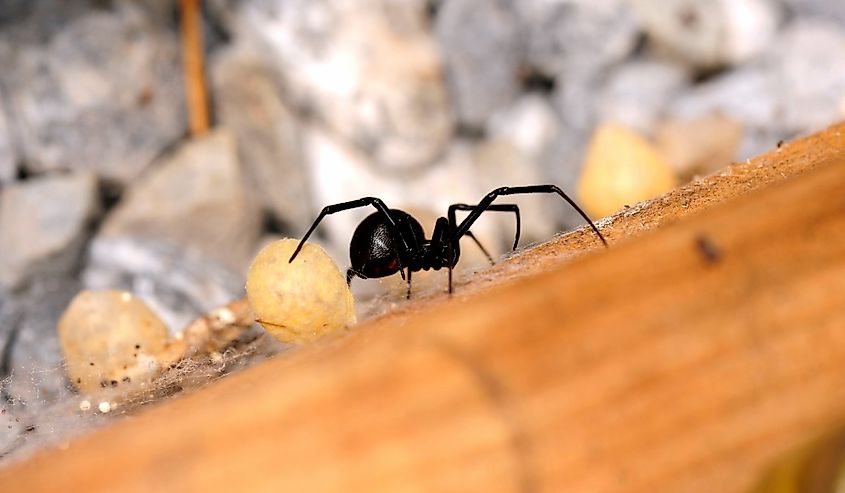
Black widows in Hawaii can be discovered around abandoned wood piles and burrows that appear all over the archipelago, including even furniture areas and low shrub environments, unlike other species. If their habitat is disturbed, their painful bite induces itching, breathing difficulties, and even restless behaviors at odd times. While it is not a significant threat to life, black widows are nevertheless a defensive species and should not be approached with aggression.
Southern Black Widow
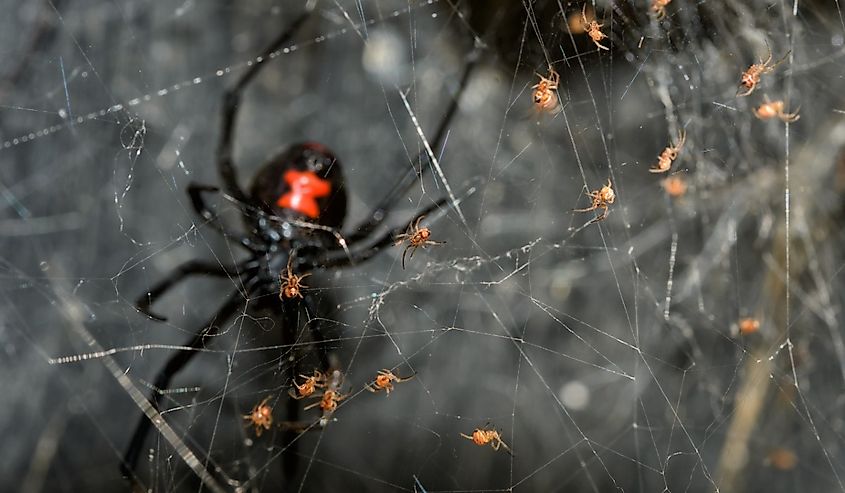
The Southern black widow, also known as Latrodectus mactans, is a venomous one to be careful of in Hawaii. With the female's distinctive black and red hourglass marking, like other black widow species, they should be avoided, even if they are minding their own business. One element all black widows share is their defense mechanism to keep their eggs protected from harm.
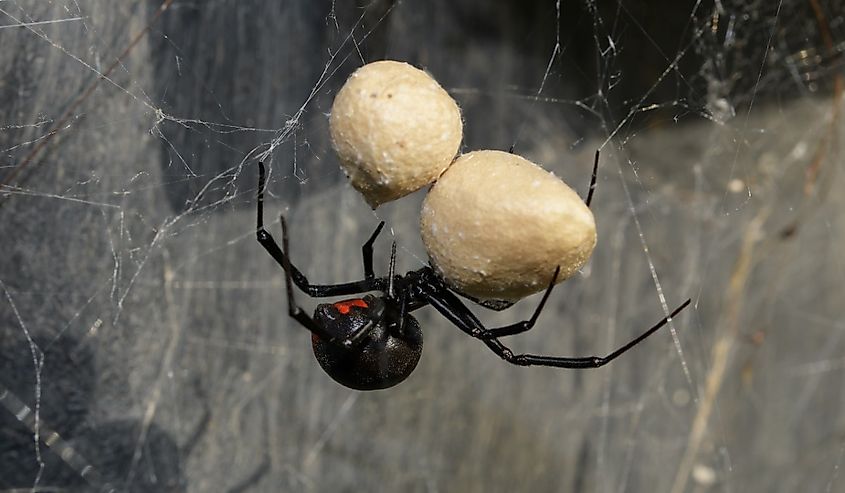
They have distinguishing features from other black widows, such as the female's complete hourglass feature on their abdomens. They are also more shiny and rectangular in size and dimensions than the ones found in Western species. Male southern widows are 4 to 6 mm long, while females can be 8 to 13 mm long.
Brown Widow
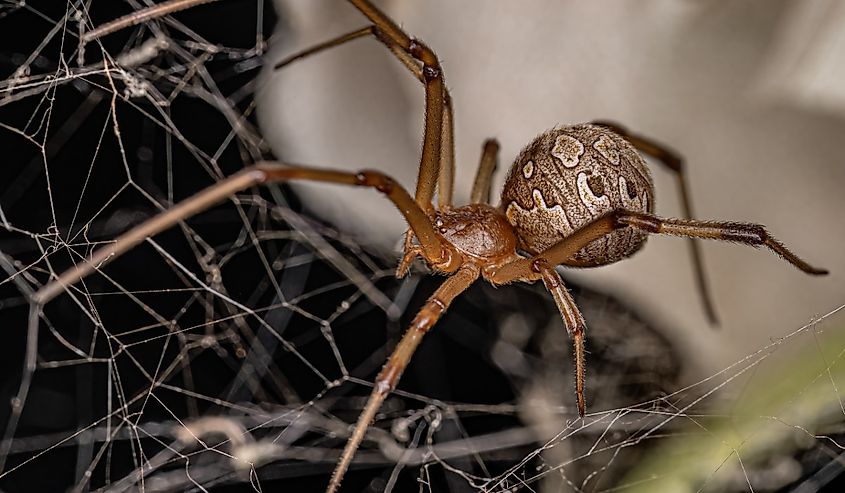
The brown widow arachnid, or Latrodectus geometricus, is a venomous type that is distinguishable due to the female's orange hourglass body marks, tan and black legs, and irregular sticky webs. Females are usually 1 to 1.5 inches long, but males are half their length and size. These arachnids are risky to humans because of their bites, which cause swellings, open sore blisters, and more severe reactions. While seen as less dangerous than black widows, the brown widow spider should still require caution if approached in a way that triggers them. They are mostly seen near empty containers and buckets and also love to be around motor vehicles and entryways, creating narrower cobwebs that other arachnids may not prefer.
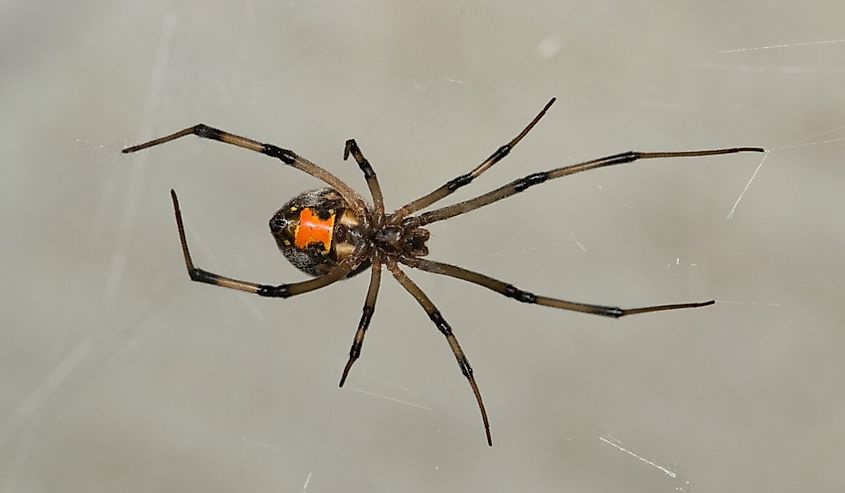
Their egg sacs are quite distinct since they contain silk spikes and look like harbor mines that were used during World War II. Considering this information, any spider bite from these species is invasive enough to cause harmful reactions, so tourists and residents in Hawaiian towns should tread lightly when near such arachnids.
Bold Jumping
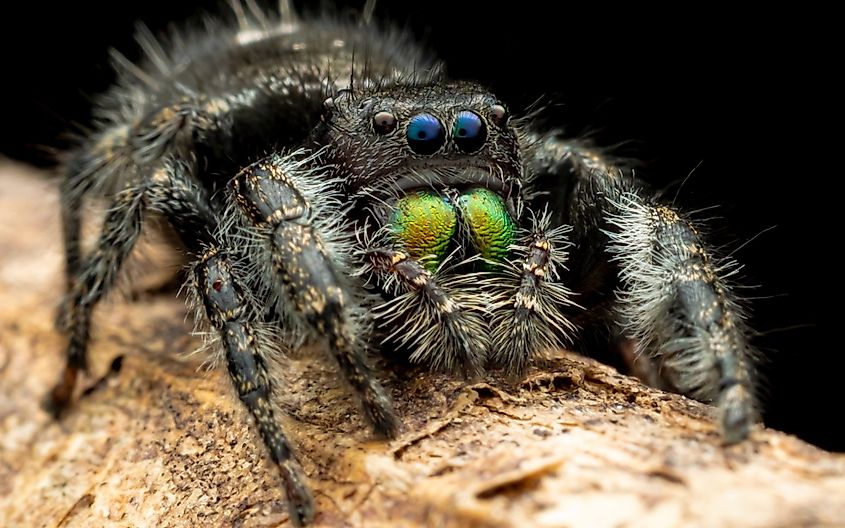
The Bold jumping spider is a creature with a black body and a white triangle on their abdomen. Phidippus audax loves to be a solitary carnivore and enjoys hunting prey with amazing eyesight. They range roughly between 13 and 20 mm in length. Their bites are a rare occurrence, but that does not mean they are not deadly to caterpillars, grasshoppers, other spiders, or even harmful to humans. The venom from these arachnids is enough to cause non-stop redness and itching for a few days, as well as nausea.
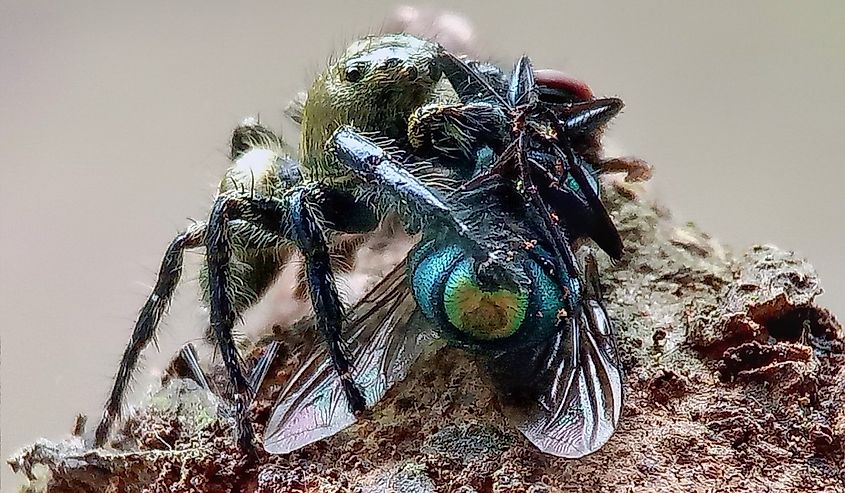
Jumping spiders like these are part of the Hawaiian ecosystem due to their agricultural nature and temperate grassland preferences. A unique aspect of these spiders is that they do not build webs when chasing prey. Still, they can retaliate against predators by jumping on them and injecting a venomous bite, causing enough of a nuisance for attackers. Their simple audacity alone can entice travelers to be extra wary when exploring new places, as these jumpers love staying in households.
Conclusion
These venomous arachnids should always be approached with caution in Hawaii. No matter which part of the Aloha State one may consider for travel or residential life, there is always bound to be a spider hanging around or sitting quietly somewhere close by. Even if the state is beautiful and noteworthy for tourism, safety and preparedness when dealing with these spiders are a must.











